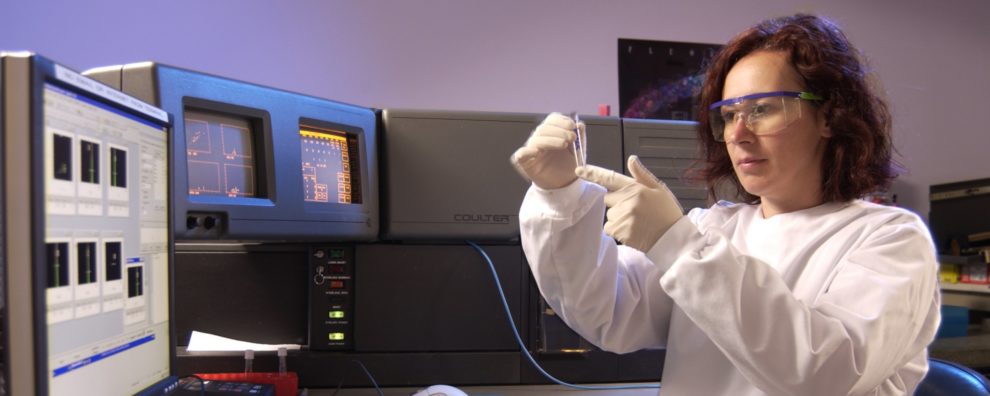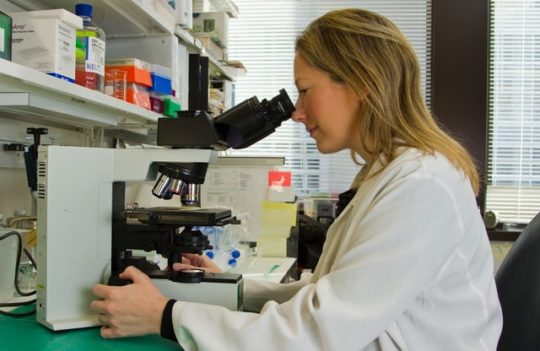 Antibody-drug conjugates
Antibody-drug conjugates
Non-cleavable linkers for ADCs
Different linker chemistry approaches have been developed since the inception of ADCs. Currently, cleavable and non-cleavable linkers are the most well-established each with its particular challenges and advantages. Substantially less research has been made on non-cleavable linker chemistry, but these linkers are still considered one of the safest ways to deliver potent cytotoxic drugs. Driven by the recent approvals of ADCs, non-cleavable linkers may soon gain importance in the development of this emerging class of biopharmaceuticals.
What is a non-cleavable linker?
Linker chemistry is a critical factor for ADC’s safety and therapeutic efficiency. Linkers bind directly to both the antibody carrier and the drug payload, for this reason, they dictate the stability of the conjugate in the patients’ plasma, the mechanism of action of the ADC, and the conditions that trigger the release of the payload. Linker chemistry can be classified as cleavable or non-cleavable. The former contains inbuilt chemical triggers to cleave the payload, while the latter is part of the payload and requires the internalization of the ADC and lysosomal processing by cytosolic and lysosomal proteases to release its cytotoxic cargo. Upon digestion, the payload then contains the small drug, the stable linker, and an amino acid appendage.
Non-cleavable linkers are only sparsely used in ADC development and the only conjugate on the market generated with this type of chemistry is Kadcyla®, an anti-HER2 ADC approved in 2013 for the treatment of HER2-positive breast cancer. Substantially less research is currently available for this type of chemistry in comparison to cleavable linkers.
However, in recent years, there has been an increasing interest in this chemistry due to its significantly reduced off-target toxicity thanks to its limited “bystander effect” – killing of antigen-negative cells. However, for some cancer types, this effect has proven to be a critical component of antitumor activity. For this reason, opting for one chemistry over the other should be assessed on a case-by-case basis.
Advantages of using non-cleavable linkers
Non-cleavable linkers are independent of chemical triggers for payload release. Instead, these linkers are integrated onto the payload and only release the drug upon internalization and processing providing a safer solution for highly cytotoxic drug delivery. Common non-cleavable linkers used in ADCs are maleimidocaproyl (MC) employed in depatuxizumab mafodotin and 4-maleimidomethyl cyclohexane-1-carboxylate (MCC) found in Kadcyla®.
Some novel non-cleavable linkers rely on hydrophilic molecules like PEG containing alkynes and piperazine. Many of these linkers showed promising results in vitro with early studies revealing a substantial reduction of the “bystander effect” when these linkers were used and enhanced therapeutic efficacy in comparison to their cleavable counterpart. Moreover, these linkers grant ADCs longer half-lives and, frequently, lower off-target toxicity.
Because of their mechanism of action, non-cleavable chemistry remains highly useful for the treatment of hematological tumors with high antigen expression. And since at least 99% of tumor cells must be killed to achieve remission in a patient, stable ADCs still play a crucial role in cancer chemotherapy. However, they are less efficient against solid tumors.
Extra steps must be taken to ensure the optimal therapeutic efficiency of non-cleavable ADCs. The anti-tumor potency of these drugs is harder to estimate in the early stages due to the structural complexity of the linker and drug pair. For this reason, it is necessary to monitor PK/PD (pharmacokinetic and pharmacodynamic properties) and cytotoxicity profiles of the non-cleavable ADCs to ensure the payload maintains its activity after lysosomal degradation of the ADC.
Many small drugs are incompatible with this type of linker chemistry. A known example is that of MMAE, an anti-mitotic drug, that loses its activity when derivatized with non-cleavable linkers. For this approach to work, each new drug-linker pair must be tested before ADC development.
Concluding remarks
There is no general guideline for the selection of the best ADC linkers. The choice must take into account the nature and distribution of the target antigen as well as the desired therapeutic effect. Although the use of non-cleavable linkers remains a promising approach, much work still needs to be done on this topic.
This type of chemistry is known to substantially increase the plasma half-life of ADC biotherapeutics. Moreover, it is generally considered safer than cleavable ADCs because the biomolecule needs to be internalized by endocytosis and degraded by lysosomal enzymes before the drug is released.
Due to the recent increase in the number of approvals of ADCs, there has been an increasing interest in improving ADC development strategies. Non-cleavable linkers remain an important tool to allow the use of potent cytotoxins in the safest way possible.
- Baah, S. et al. Antibody–Drug Conjugates—A Tutorial Review. Molecules. 2021; 26:2943. doi: 10.3390/molecules26102943
- Bargh, J. D. et al. Cleavable linkers in antibody-drug conjugates. Chem Soc Rev. 2019; 48(16):4361-4374. doi: 10.1039/c8cs00676h
- Lu, J. et al. Linkers Having a Crucial Role in Antibody–Drug Conjugates. Int J Mol Sci. 2016; 17(4): 561. doi: 10.3390/ijms17040561
- Tsuchikama, K. and An, Z. Antibody-drug conjugates: recent advances in conjugation and linker chemistries. Protein Cell. 2018; 9(1): 33–46. doi: 10.1007/s13238-016-0323-0
You could also be interested in:
- Cleavable linkers for ADCs


